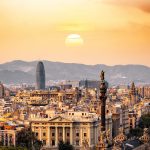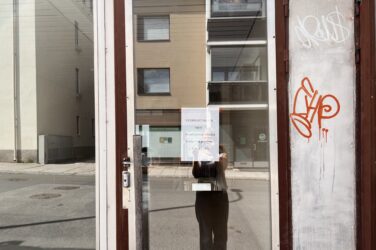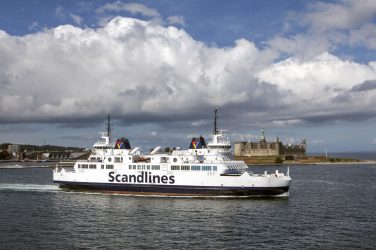A location that until recently many of us would struggle to place on a map, Dubrovnik, with its rich history, dating back to diplomatic relations with the English Court in the Middle Ages, is no longer a well-guarded secret. Whether you are a culture-vulture, Star Wars or Game of Thrones fan, party goer, water sports enthusiast, thrill-seeking cliff jumper or sun-worshipping beach lover, this city has it all.
This is Dubrovnik, in a snapshot.
Leaving the past behind and moving onward

22 years on from the country’s war of independence, Croatia’s most alluring city reveals almost nothing of the nation’s troubled past. For those of us born in the 90s, we grew up blissfully unaware of the fighting in Croatia and, today, there seems almost no trace of its presence at all.
Still, for those who do remember, this was a war that left the nation scarred. Most sources put the total number of causalities at a staggering 20,000, with more than a quarter of million people displaced from their homes.
This generational contrast became evident to me when I told my old boss in Milan I was visiting Croatia and he could hardly believe me. He was shocked that a place associated (in his mind) with deep-rooted conflict and civil unrest has now become such a hotspot for tourism.
Nevertheless, Croatia has managed to redefine itself as a major European destination, attracting millions of visitors each year.
In fact, Dubrovnik, much like Croatia itself, was until recently a well-kept secret. Nowadays, it is a location which, according to the tourism figures for 2015, hosts close to 2 million tourists every year.

It comes as no surprise, then, that tourism accounts for a large amount of Croatia’s overall economic output.
When in Dubrovnik, it is easy to see why.
Protruding out on a peninsular chunk of the Dalmatian coast, it’s no wonder this charming urban centre has been used for countless film sets over the years. Medieval architecture and columned porticos frame marble-paved Renaissance squares, burnished by the sweltering mid-summer heat.
In other words: a director’s dream.
Since the fall of communism in Croatia in 1990, not only have a myriad of tourists and filmmakers flocked to Dubrovnik, but also the arrival of new infrastructural developments such as the Franjo Tuđman Bridge , have truly opened the city up for business.

Photo courtesy: Sam Stevenson

A journey from one side of the valley to the other that once took several hours by car can now, thanks to this impressive cable-stayed construction, be completed in just a matter of minutes.
Urban developments such as this are symbolic of Dubrovnik’s modern identity, along with that of the nation as a whole.

Dubrovnik: A coastal city of island gems

Croatia’s southern rocky spine acts as a natural mountain border, separating the skinny nation from neighbouring Bosnia and Herzegovina. The country boasts miles of exquisite coastline, scattered with secluded island territories, whereas her neighbours – Slovenia and Bosnia and Herzegovina – possess only a tiny fraction of the striking Adriatic coast. I always thought the Croatians got the best deal here.
In much the same way as with other coastal nations, the Croatian way of life reflects its oceanic roots. The people are laid back, the pace of life is slow, and fish is almost certainly on the menu.
In fact, the best way to get around the country—seeing as the bulk of the major cities (save Zagreb) are situated on the coast—is by catamaran.
Dubrovnik itself occupies a spot on the coast skirted by many idyllic islands dotted along its shoreline. Whilst visiting, it is a great idea to catch a boat to see one of these picturesque sites.
One such island is Lokrum.
Just 600 metres from Dubrovnik, it is complete with botanical garden, sea-water swimming pools and caves, and a ‘path to paradise’ where, at 96 metres above sea level, Lokrum’s imposing Fort Royal stands.
You’ll also find a multitude of peacocks and peahens, along with rabbits, other birdlife and—as it was used to film certain scenes from Game of Thrones—there is even a chance to sit on a replica of the ‘Iron Throne’.



Dubrovnik from the old city walls and at street level
Game of Thrones fans: winter seems a very long way off when scaling Dubrovnik’s old city walls. The on-site location of King’s Landing in the HBO Series – Dubrovnik’s Old Town – is enclosed within 2km of majestic medieval walls.

From the city walls, terracotta rooftops and Renaissance-style domes spill out towards the sparkling sea, an amalgam of birds peppers the sky, and in the distance Lokrum stands as a stoic sentinel over the ancient city.


Surveying Dubrovnik’s historic centre from the city walls is undoubtedly the best way to get a feel for the place. However, with its quaint, narrow streets, intriguing archways and stone stairways, the city is just as impressive at street-level as it is from above.





Dubrovnik by night
A Croatian sunset is perfectly complemented by a glass of local wine and a plate of Šporki makaruli (Dirty macaroni, in English).
A traditional dish in Dubrovnik, Šporki makaruli comprises beef, meat sauce and macaroni pasta. The Croatian’s are also a dab hand at wine production, with most families giving it a go for themselves.
Then, sitting by the port as the sun goes down, the city lights show off just how stunning this place is.
After enjoying the local tipple and cuisine, if you are looking to party, Dubrovnik’s very own super-club: Revelin will not disappoint. Things don’t get going until about 1am, and, in true Croatian style, the party continues until dawn. TIP: Keep an eye out for promoters on the streets, they will give you flyers for FREE entry… you can thank me later.
Dubrovnik’s enduring appeal
Breath-taking views, quirky cliff-edge bars and culinary delights capture this city’s lively spirit. Dubrovnik, just like Croatia, has modernised and adapted to reflect a growing tourist demand. It seems likely that people will be coming here for years to come.
I, for one, will definitely be back!











